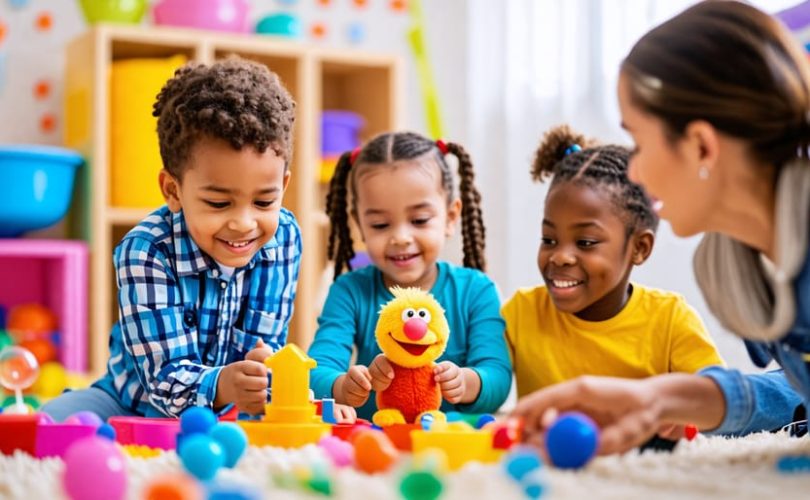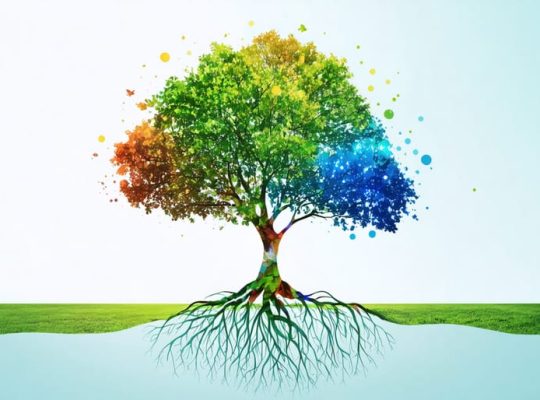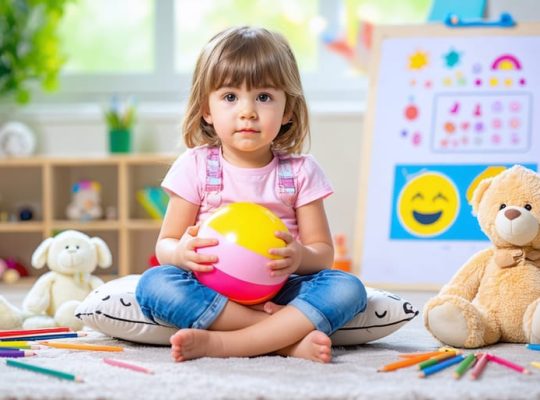Engage children in playful activities that teach emotional regulation skills. Set up a feelings board game where they identify and discuss emotions to build awareness. Have them create an anger thermometer craft, labeling intensity levels and healthy coping strategies for each stage. Introduce deep breathing exercises by having them blow bubbles or pretend to be trees swaying in the wind. If your child has recently received a mental health diagnosis, incorporating play therapy activities into their treatment plan can provide a safe, fun way to process feelings and develop emotional regulation abilities.
Understanding Emotional Regulation in Children
The Role of the Brain in Emotional Regulation
The brain plays a crucial role in regulating emotions, and this ability develops throughout childhood. The prefrontal cortex, which is responsible for executive functions like decision-making and impulse control, helps manage emotional responses. However, this region of the brain continues to develop into early adulthood. As children grow, their brains form new neural connections that strengthen their capacity for emotional regulation. Through experiences and interactions with caregivers, children learn to recognize, express, and cope with their emotions in healthy ways. Play therapy activities can support this development by providing a safe space for children to explore and process their feelings, ultimately promoting the brain’s ability to effectively regulate emotions. By understanding the brain’s role in emotional regulation, parents and professionals can better support children’s mental health and well-being.
Signs Your Child May Be Struggling with Emotional Regulation
Some common signs that your child may be struggling with emotional regulation include frequent outbursts, tantrums, or meltdowns that seem disproportionate to the situation. They may have difficulty calming themselves down after becoming upset, or struggle to transition between activities smoothly. You might notice that they have trouble expressing their emotions verbally, instead resorting to physical aggression, withdrawal, or self-soothing behaviors like thumb-sucking or hair-twirling. Difficulty making and maintaining friendships, as well as struggling to follow rules or cope with frustration, can also indicate challenges with emotional regulation. Building emotional resilience is key to helping children navigate these struggles. If you consistently observe these signs in your child and are concerned about their ability to manage emotions effectively, it may be helpful to explore play therapy activities or consult with a mental health professional specializing in child development.
The Power of Play Therapy
How Play Therapy Helps Children Process Emotions
Play therapy provides a safe, nurturing environment where children can express their emotions through symbolic play. By engaging in imaginative activities like role-playing, storytelling, and art, children can process and communicate feelings they may struggle to verbalize. The therapeutic relationship with the play therapist offers a supportive space for children to explore their inner world without fear of judgment. Through play, children develop emotional literacy, learning to recognize and name their feelings. They also practice problem-solving and coping strategies, building resilience and self-regulation skills. Play therapy helps children make sense of difficult experiences, work through trauma, and develop a healthier sense of self. By meeting children where they are developmentally and emotionally, play therapy empowers them to heal, grow, and thrive.
The Role of the Therapist in Play Therapy
The play therapist serves as a gentle guide, creating a safe and supportive environment for the child to express and explore their emotions through play. By carefully selecting age-appropriate activities and offering empathetic responses, the therapist helps the child develop emotional awareness and regulation skills. They observe the child’s play, reflecting back their feelings and experiences without judgment. The therapist may also model healthy coping strategies and problem-solving techniques during play sessions. Throughout the process, the therapist collaborates with parents and caregivers, offering guidance on supporting the child’s emotional growth at home. With the therapist’s expertise and compassionate presence, play therapy becomes a powerful tool for fostering emotional well-being in children.
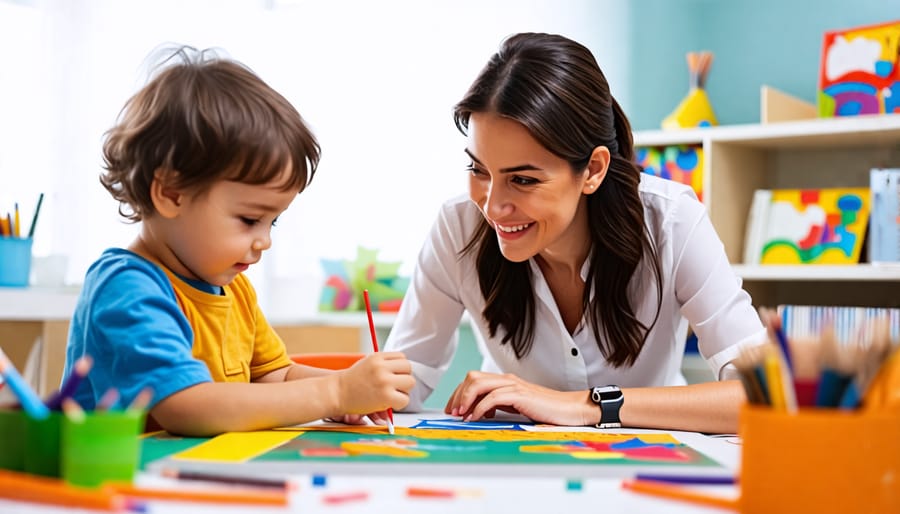
9 Play Therapy Activities for Emotional Regulation
Emotion Charades is an engaging play therapy activity that helps children identify and express different emotions. The therapist or parent acts out various emotions, such as happiness, sadness, anger, or fear, using facial expressions and body language. The child then guesses the emotion being portrayed. This activity promotes emotional awareness and empathy, as the child learns to recognize emotions in others. It also provides an opportunity for the child to discuss their own experiences with each emotion, helping them develop a broader emotional vocabulary. Emotion Charades is a fun and interactive way to build emotional intelligence and self-awareness in children.
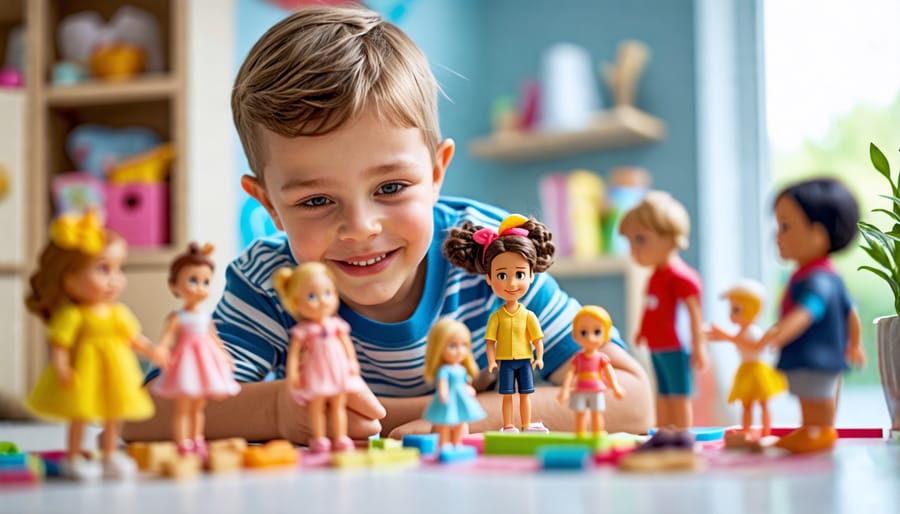
Using a feelings wheel, children spin the wheel and identify the emotion it lands on. They then use play materials like puppets, dolls, or art supplies to act out a scenario related to that emotion. This helps them recognize and express different feelings in a safe, imaginative setting. Caregivers can guide the play by asking questions like “How does that emotion feel in your body?” or “What might help the character feel better?” This activity builds emotional vocabulary, self-awareness, and problem-solving skills while providing a fun, engaging way to explore a range of emotions.
The feelings thermometer is a visual tool that helps children identify and express their emotions. To make one, draw a large thermometer on paper and divide it into colored sections representing different emotions, such as happy, sad, angry, and scared. Encourage the child to point to or color in the section that matches their current emotional state. This activity promotes emotional awareness and opens up opportunities for discussion. You can also use the thermometer to role-play scenarios and explore healthy coping strategies for each emotion. By regularly checking in with the feelings thermometer, children develop a stronger understanding of their emotional experiences and learn to communicate them effectively.
Emotion stones are a versatile play therapy activity that helps children identify, express, and regulate their emotions. To begin, gather a collection of smooth, flat stones and decorate each one with a different emotion, such as happy, sad, angry, scared, or calm. Encourage the child to choose a stone that represents their current feeling and discuss what that emotion means to them. Together, explore healthy ways to express and cope with that emotion, like deep breathing for anxiety or talking to a trusted adult when feeling sad. Emotion stones foster emotional awareness, communication skills, and problem-solving abilities in a gentle, supportive environment.
Emotion charades is a fun and engaging activity that helps children practice identifying and expressing emotions. To play, write down various emotions on slips of paper, such as happy, sad, angry, surprised, or scared. Have the child pick a slip and act out the emotion without using words, while others try to guess the feeling. This game encourages children to recognize and label emotions in themselves and others, promoting empathy and understanding. Emotion charades also provides an opportunity for children to safely express and explore a range of emotions through playful acting and movement.
Puppet play can be a powerful tool for helping children express and regulate their emotions. Encourage your child to create a puppet show where the characters experience different feelings and work through challenges. For example, one puppet could be feeling sad because a friend moved away, while another puppet offers comfort and suggests coping strategies. As the puppets interact, your child can explore emotions in a safe, imaginative space. Pause the play to discuss the characters’ feelings and brainstorm additional ways they could handle the situation. This activity fosters emotional awareness, empathy, and problem-solving skills while providing a creative outlet for self-expression.
Dance party freeze is a fun activity that encourages emotional regulation through music and movement. Put on some upbeat music and have a dance party with your child. Every so often, pause the music and call out an emotion, like “happy,” “sad,” or “excited.” When the music stops, your child must freeze in a pose that expresses that emotion. This activity helps children connect their body language to their emotions and practice transitioning between different feeling states. It’s also a great way to get some physical activity and have fun together, which can boost your child’s mood and strengthen your bond.
Emotion Masks is an engaging play therapy activity that helps children identify and express their feelings. The therapist provides blank masks and art supplies, encouraging the child to create masks representing different emotions like happiness, sadness, anger, or fear. As they decorate each mask, the therapist invites the child to discuss the emotions and share personal experiences related to those feelings. Role-playing with the masks allows children to practice expressing and regulating their emotions in a safe, supportive environment. This activity promotes emotional awareness, empathy, and effective communication skills, all of which are crucial for healthy emotional regulation.
Emotion Face Charades is another engaging play therapy activity to help children recognize and express emotions. The therapist or caregiver draws or prints out pictures of various facial expressions depicting different emotions like happiness, sadness, anger, fear, and surprise. The child then acts out the emotion on the card while others guess which emotion is being portrayed. This activity helps children learn to identify emotions in themselves and others, and practice expressing them in a safe, playful environment. Through this game, children develop empathy, social skills, and emotional awareness, all crucial components of healthy emotional regulation.
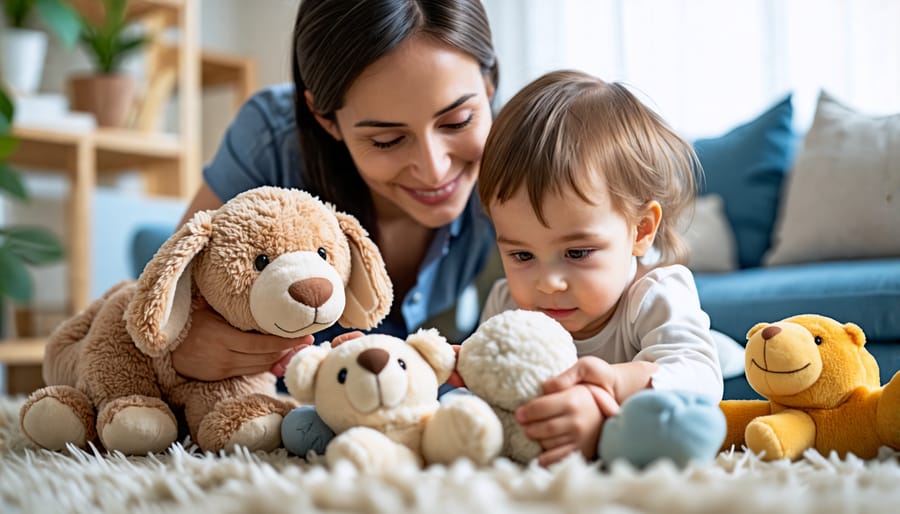
Incorporating Play Therapy at Home
Incorporating play therapy principles at home can be a powerful way to support your child’s emotional regulation in daily life. One simple way to start is by creating a designated “calm down” space where your child can go when feeling overwhelmed. Fill it with soothing items like stuffed animals, stress balls, and coloring books. Encourage your child to express their feelings through art, whether by drawing, painting, or sculpting with play dough. You can also use role-playing with puppets or stuffed animals to help your child practice expressing and managing emotions in a safe, imaginative setting.
Reading books about emotions and discussing the characters’ experiences can help your child develop emotional literacy and empathy. Engage in physical activities together, like yoga or dancing, to release pent-up energy and promote relaxation. Incorporate mindfulness practices, such as deep breathing or guided imagery, into your child’s daily routine to help them stay grounded in the present moment. Remember, the goal is to create a nurturing environment where your child feels safe to explore and express their emotions. By integrating interactive therapy tools and techniques into your family’s everyday life, you can foster your child’s emotional growth and resilience.
In conclusion, play therapy can have a profoundly positive impact on children’s emotional well-being. By providing a safe, nurturing environment where children can express themselves freely and work through their challenges, play therapy helps build resilience, self-esteem, and emotional regulation skills. The activities and techniques used in play therapy sessions are designed to meet each child’s unique needs, allowing them to process their experiences and develop healthy coping mechanisms.
If you are a parent concerned about your child’s emotional well-being, exploring play therapy as an option can be a transformative step. Whether your child is dealing with anxiety, trauma, or behavioral issues, a trained play therapist can help them navigate their emotions and build the tools they need to thrive. By engaging in play therapy, your child can develop a stronger sense of self, improve their communication skills, and learn to form healthier relationships.
Remember, seeking support for your child’s mental health is a sign of strength and love. By prioritizing their emotional well-being and exploring options like play therapy, you are setting them up for a brighter, more resilient future. Trust your instincts, reach out for help when needed, and know that with the right support, your child can overcome challenges and flourish.

